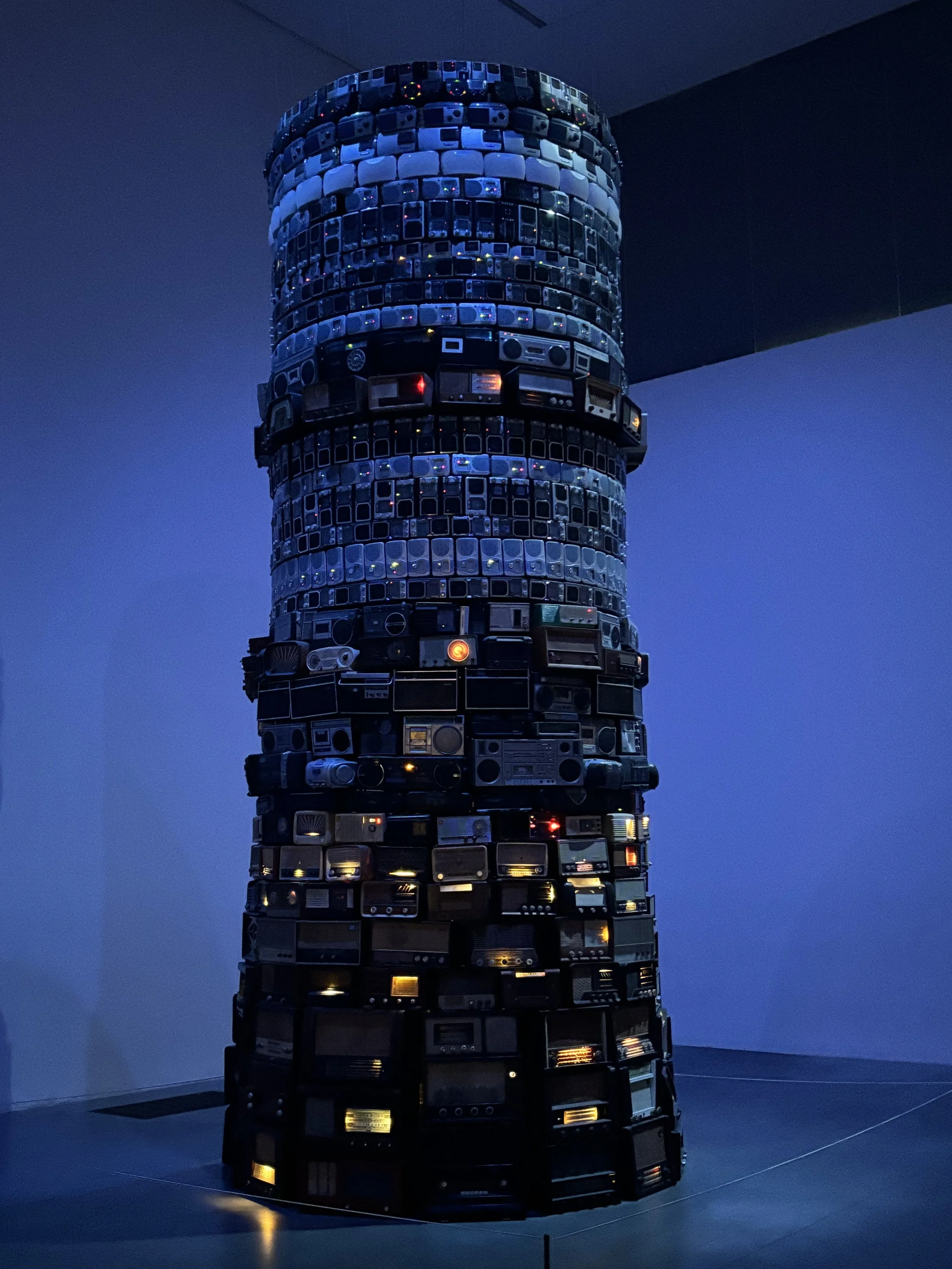visit to Tate Modern.
Written by Rickyah Blake
Photo of Babel (2001)
In my visit to the Tate Modern, I recognized the importance of accessibility in art spaces. Being able to see contemporary art for free allows for attendees to resonate and explore subject matters outside of their daily lives. During my time at Tate, I spent most of it viewing a floor dedicated to “how artists respond to mass media and the ever-changing technologies that shape our world”. The work that inspired me the most is Cildo Meireles’ Babel (2001) which features an installation of radios turned to different stations stacked on top of each other. This work reflects on technology and its relation to God. The viewpoint of questioning whether God or a higher power is satisfied with human dependence on technology is one I, too, explore in my works. Has modern technology become our Gods? Do we worship our devices?
Selfie in interactive exhibit
While there, I had the pleasure of viewing Electric Dreams, an exhibit exploring art and technology before the internet. The Electric Dreams exhibition at Tate Modern is an opportunity to see the history of computational art practice. The exhibition held various disciplines revealing that computational art goes beyond utilizing technology in art but is more about reflecting on technology in art. One of my favorite parts of the exhibition featured a red and bed hallway with a shelf of mirrors. Each mirror distorted your image to mimic the concept of a different perspective. Interactive installations are a great way for viewers to truly see how computation is in everyday life. Many of the artists made their works interactive where viewers had to participate to fully experience the work. Families crowded around to view projects and touch materials that were a part of the installations.
References:
Tate, 2023. *Electric Dreams: Exhibition Guide*. [online] Available at: <https://www.tate.org.uk/whats-on/tate-modern/electric-dreams/exhibition-guide>


